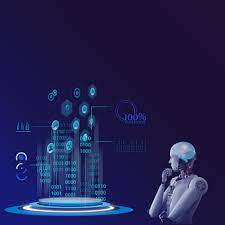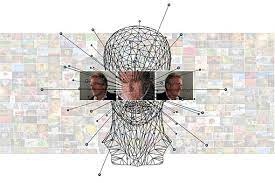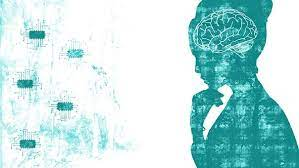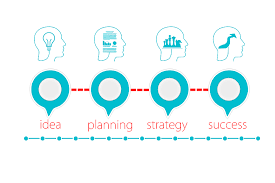An Introduction to Machine Learning Algorithms
Machine learning is a subfield of artificial intelligence (AI) that provides systems the ability to automatically learn and improve from experience without being explicitly programmed. Machine learning algorithms build models based on sample data, known as "training data," in order to make predictions or decisions without being specifically instructed to do so. This article provides an overview of some of the most commonly used machine learning algorithms.

Supervised Learning
Supervised learning is the most common type of machine learning. It involves the use of labeled data to train an algorithm to make predictions. The algorithm is trained to recognize patterns in the training data, and then uses these patterns to make predictions on new, unseen data. Some popular algorithms for supervised learning include:

Linear Regression
Linear regression is a simple approach for predicting a continuous dependent variable from one or more independent variables. The goal is to find the line of best fit that minimizes the differences between the predicted values and the actual values. Linear regression is used for problems where there is a linear relationship between the independent and dependent variables.
Logistic Regression
Logistic regression is a variation of linear regression used for predicting binary outcomes (e.g., yes/no, 0/1). It models the relationship between the independent variables and the probability of the binary outcome. The predicted probability is then transformed into a binary prediction using a threshold, such as 0.5. Logistic regression is commonly used for classification problems.
Decision Trees
Decision trees are a type of algorithm used for both classification and regression tasks. The algorithm splits the data into smaller subsets based on the features and continues to split the subsets until a stopping criteria is reached (e.g., all samples in a subset belong to the same class or the subset is too small). Each split is represented as a node in the tree, and the final splits, called leaves, represent the predictions. Decision trees are easy to interpret and handle both categorical and numerical data well.

Unsupervised Learning
Unsupervised learning algorithms are used for problems where there is no labeled data. The goal is to discover the underlying structure in the data. Some popular algorithms for unsupervised learning include:

K-Means Clustering
K-Means clustering is a technique used to partition a set of points into K clusters, where each point belongs to the cluster with the closest mean. The algorithm iteratively updates the mean of each cluster and the membership of each point to the closest mean until convergence. K-Means is used for tasks such as market segmentation and image compression.
Principal Component Analysis (PCA)
PCA is a technique used to reduce the dimensionality of data while retaining as much information as possible. It does this by finding the directions of maximum variance in the data and projecting the data onto a new set of dimensions with fewer variables. PCA is used for tasks such as visualization, noise reduction, and speeding up machine learning algorithms.
Reinforcement Learning
Reinforcement learning involves training a model to make decisions by performing actions and receiving feedback a form of reward or penalty. The goal is for the model to learn a policy that maximizes the total reward over time. Reinforcement learning is commonly used for problems such as game playing, robotics, and autonomous navigation. Some popular algorithms for reinforcement learning include:

Q-Learning
Q-Learning is a value-based reinforcement learning algorithm that uses a Q-table to store the estimated reward for taking a specific action in a specific state. The algorithm updates the Q-values based on the observed reward and the maximum expected reward for the next state. Q-Learning is used for problems where the state and action space is small and the dynamics of the environment are known.
Policy Gradient Methods
Policy gradient methods are a class of reinforcement learning algorithms that use gradient descent to update the parameters of a policy network. The policy network outputs actions given the current state, and the gradients are computed with respect to the expected reward. Policy gradient methods are used for problems where the state and action space is large and it is difficult to represent the Q-values as a table.

Deep Learning
Deep learning is a subfield of machine learning that is inspired by the structure and function of the brain, known as artificial neural networks. Deep learning algorithms use multiple layers of nonlinear processing units for feature extraction and transformation, allowing them to learn hierarchical representations of data. Some popular algorithm for deep learning include:

Convolutional Neural Networks (CNNs)
Convolutional Neural Networks are a type of deep learning algorithm used for image classification and recognition. They are designed to process data with a grid-like topology, such as an image, and learn local features or representations through convolutional layers and pooling layers. CNNs have been highly successful in tasks such as object recognition, face recognition, and semantic segmentation.
Recurrent Neural Networks (RNNs)
Recurrent Neural Networks are a type of deep learning algorithm used for processing sequential data, such as time-series data or text data. They use feedback connections to allow information to persist or be passed from one step of the sequence to the next. RNNs have been highly successful in tasks such as language translation, speech recognition, and text classification.
Generative Adversarial Networks (GANs)
Generative Adversarial Networks are a type of deep learning algorithm used for generative modeling, where the goal is to generate new samples that are similar to a training dataset. They consist of two neural networks, a generator network and a discriminator network, that compete with each other in a minimax game. The generator network generates samples and the discriminator network evaluates the samples and provides feedback to the generator network. GANs have been highly successful in tasks such as image synthesis, style transfer, and anomaly detection.
Conclusion
In conclusion, machine learning algorithms are used for a variety of tasks and can be categorized into supervised learning, unsupervised learning, reinforcement learning, and deep learning. Each type of algorithm has its own strengths and weaknesses, and the choice of algorithm depends on the problem and the type of data. It is important to understand the basic concepts and techniques of each algorithm in order to choose the most appropriate solution for a given problem.
Congratulations, your post has been curated by @r2cornell-curate. Also, find us on Discord
Felicitaciones, su publication ha sido votado por @r2cornell-curate. También, encuéntranos en Discord